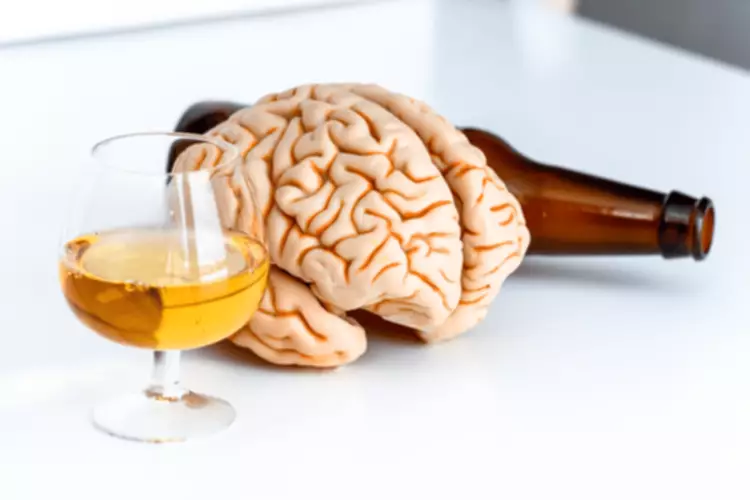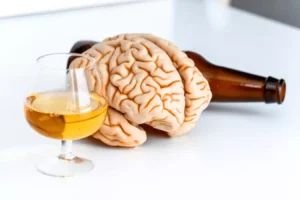
The way pre-lapse abstinence duration and amount smoked might modulate recurrent AVEs and subsequent progression remains unclear. One possibility is that lapses occurring after longer periods of abstinence taint successful progress accumulated to that point, call the lapser’s ability to maintain abstinence into question, increase attributions of blame, as well as feelings of guilt. Alternatively, longer pre-lapse abstinence time may actually increase perceptions of control over cessation, and may therefore protect against the AVE, mitigating the detrimental impact of lapses. Harm reduction may also be well-suited for people with high-risk drug use and severe, treatment-resistant SUDs (Finney & Moos, 2006; Ivsins, Pauly, Brown, & Evans, 2019). These individuals are considered good candidates for harm reduction interventions because of the severity of substance-related negative consequences, and thus the urgency of reducing these harms. Indeed, this argument has been central to advocacy around harm reduction interventions for people who inject drugs, such as SSPs and safe injection facilities (Barry et al., 2019; Kulikowski & Linder, 2018).
How The Abstinence Violation Effect Impacts Long-Term Recovery
For example, offering nonabstinence treatment may provide a clearer path forward for those who are ambivalent about or unable to achieve abstinence, while such individuals would be more likely to drop out of abstinence-focused treatment. This suggests that individuals with nonabstinence goals are retained as well as, if not better than, those working toward abstinence, though additional research is needed to confirm these results and examine the effect of goal-matching on retention. Donovan (1996) followed this conceptualization and included transitional factors (e.g., abstinence violation effect), which influence the continuation of the transgressive behavior, after the initial lapse.
Participants
- No study conducted to date has leveraged this methodology to empirically examine the AVE as a cascading phenomenon that affects lapse progression during the smoking cessation process.
- One common characteristic of alcohol treatment outcome data is the presence of strong floor effects, where the majority of individuals at any one discrete time point are not drinking and the other mode is notoriously characterized by heavy drinking patterns (Hunt et al., 1971; Sutton, 1979).
- Learning healthy coping mechanisms can help you manage stress, cravings, and triggers without resorting to substance use.
- It seems akin to failing one exam during senior year in high school and being sent back to first grade as a result!
- Despite compatibility with harm reduction in established SUD treatment models such as MI and RP, there is a dearth of evidence testing these as standalone treatments for helping patients achieve nonabstinence goals; this is especially true regarding DUD (vs. AUD).
- The first component, called “proximal risk,” had sums of squared loadings for the first rotated component of 1.58 (26.2% of the variance) and the second component, called “distal risk,” had sums of squared loadings of 1.41 (23.5% of the variance).
Future studies could also incorporate other methods for estimating post-treatment outcomes (e.g., Ecological Momentary Assessment, see Stone & Shiffman, 1994) and different operationalizations of relapse risk factors (e.g., a role-play test to measure coping skills, see Carroll et al., 1999). This suggests that individuals with non-abstinence goals are retained as well as, if not better than, those working toward abstinence, though additional research is needed to confirm these results and examine the effect of goal-matching on retention. The results of the Sobell’s studies challenged the prevailing understanding of abstinence as the only acceptable outcome for SUD treatment and raised a number of conceptual and methodological issues (e.g., the Sobell’s liberal definition of controlled drinking; see McCrady, 1985). A “controlled drinking controversy” followed, in which the Sobells as well as those who supported them were publicly criticized due to their claims about controlled drinking, and the validity of their research called into question (Blume, 2012; Pendery, Maltzman, & West, 1982).
Cognitive neuroscience of self-regulation failure
Despite the intense controversy, the Sobell’s high-profile research paved the way for additional studies of nonabstinence treatment for AUD in the 1980s and later (Blume, 2012; Sobell & Sobell, 1995). Marlatt, in particular, became well known for developing nonabstinence treatments, such as BASICS for college drinking (Marlatt et al., 1998) and Relapse Prevention (Marlatt & Gordon, 1985). Like the Sobells, Marlatt showed that reductions in drinking and harm were achievable in nonabstinence treatments (Marlatt & Witkiewitz, 2002). The AVE was introduced into the substance abuse literature within the context of the “relapse process” (Marlatt and Gordon 1985, p. 37). Relapse has been variously defined, depending on theoretical orientation, treatment goals, cultural context, and target substance (Miller 1996; White 2007).


Under these circumstances a prolapse may be characterized by the individual’s recognition of their drinking and attempts to reduce or stop their drinking. Prolapse is also defined by temporal factors, such as getting back on track as soon as possible at the end of a discrete drinking episode (e.g., one drink or a weekend binge). If abstinence is the goal, then a drink may be considered a lapse; but if the individual maintains harm reduction goals, then a lapse may be defined as a harmful consequence that is related to drinking (e.g., missing work, fighting with spouse). For example, in AUD treatment, individuals with both goal choices demonstrate significant improvements in drinking-related outcomes (e.g., lower percent drinking days, fewer heavy drinking days), alcohol-related problems, and psychosocial functioning (Dunn & Strain, 2013). Additionally, individuals are most likely to achieve the outcomes that are consistent with their goals (i.e., moderation vs. abstinence), based on studies of both controlled drinking and drug use (Adamson, Heather, Morton, & Raistrick, 2010; Booth, Dale, & Ansari, 1984; Lozano et al., 2006; Schippers & Nelissen, 2006). AA was established in 1935 as a nonprofessional mutual aid group for people who desire abstinence from alcohol, and its 12 Steps became integrated in SUD treatment programs in the 1940s and 1950s with the emergence of the Minnesota Model of treatment (White & Kurtz, 2008).


The relapse prevention model (RPM) developed by Marlatt was the first to establish an integrative framework for understanding the cognitive-behavioral processes that drive progression from lapses to relapse (Marlatt & Gordon, 1985), and has been prominent in clinical thinking about abstinence violation effect relapse. Nearly all other prominent models of addiction and relapse focus on the psychophysiological determinants of drug priming and reinforcement (e.g., Baker et al., 1986; Kalivas & Volkow, 2005; Koob & Le Moal, 1997; Robinson & Berridge, 2003). According to the RPM (Marlatt & Gordon, 1985; Witkiewitz & Marlatt, 2004), the primary determinants of whether an individual who has lapsed will progress towards relapse or towards reestablishing abstinence are that person’s explicit (i.e., subject to conscious awareness) cognitive and emotional responses to lapsing. Specifically, relapse is predicted to be more likely when lapses produce an abstinence violation effect (AVE), characterized by internal attribution of blame, reduced abstinence self-efficacy, and feelings of guilt. This constellation of responses, coupled with the subjective effects of drug ingestion, is posited to predispose the person to further lapses, thus driving the lapse-relapse process in an accelerating downward spiral (Marlatt & Gordon, 1985). Treatment components stemming from the RPM have been incorporated into behavioral interventions for relapse prevention (Brandon, Vidrine, & Litvin, 2007), not only for smoking cessation (Abrams et al., 2003), but also for other addictions and health-related behavior change targets (Marlatt & Donovan, 2005).
1. Nonabstinence treatment effectiveness
Parametric survival analyses that allowed for recurrent events within-subjects treated each lapse episode as the beginning of an interval during which the participant was at risk for having another lapse, and examined how AVE responses to each lapse affected the likelihood of progression. Survival analysis assesses risk for an event by analyzing the incidence of the event over a specified period of time, referred to as the event’s hazard. Single-event survival analysis examines a single event, assuming that no further events are possible (it was originally developed to analyze death rates). In contrast, recurrent events survival analyses assess the hazard of events that can occur multiple times (e.g., lapses). Recurrent models incorporating both the timing and sequence of lapses made it possible to systematically examine the extent to which each successive AVE response prospectively accelerated lapses across the series, driving the process downward toward relapse. Upon breaking the self-imposed rule, individuals often experience negative emotions such as guilt, shame, disappointment, and a sense of failure.
Links to NCBI Databases
- The first catastrophe model (Cusp Model 1) provided a direct replication of the findings from Hufford et al. (2003), with distal risk constrained as the splitting parameter and proximal risk constrained as the normal parameter.
- Additional hours of prospective abstinence time across each 1-unit change in post-lapse internal attribution of blame, plotted as a function of abstinence duration (days) preceding the lapse.
- Thus, studies will need to emphasize measures of substance-related problems in addition to reporting the degree of substance use (e.g., frequency, quantity).
One of the unique features of Cuspfit is the ability to enter up to five independent variables as control parameters. For example if a cusp model was proposed in which two variables were theoretically consistent with the splitting parameter and one variable was theoretically consistent with the normal parameter, then the user could constrain these three variables to test this hypothesis. It is also possible to model the behavior with all independent variables constrained to zero, therefore testing the fit of a catastrophe model without control parameters influencing the shape or position of the cusp. Additional hours of prospective abstinence time across each 1-unit change in post-lapse guilt, plotted separately for those assigned to Active versus Placebo NRT patch. Model-based predicted median hours of prospective abstinence preceding each lapse, plotted as a function of Active versus Placebo NRT patch assignment.
2. Established treatment models compatible with nonabstinence goals
Lapses distributed by the sequence they occurred (Left Axis), along with median hours of abstinence preceding each lapse (Right Axis). The amount of abstinence time preceding each lapse was used to evaluate the extent to which lapses occurring after longer periods of time were more or less likely to trigger AVE reactions. One day, when he was faced with a stressful situation, he felt overwhelmed, gave in to the urge, and had a drink. I have lost all that time,” which can trigger a self-destructive mindset and potentially lead to further relapse. The Abstinence Violation Effect (AVE – think the abbreviation for avenue to help you remember it) is what happens when an individual deviates from his/her plan – and then continues to remain off that path due to frustration, shame, guilt, etc. When that person takes even one drink (”violating” their abstinence), the tendency is to think, “I really blew it…I’m a failure…might as well keep on drinking now!

